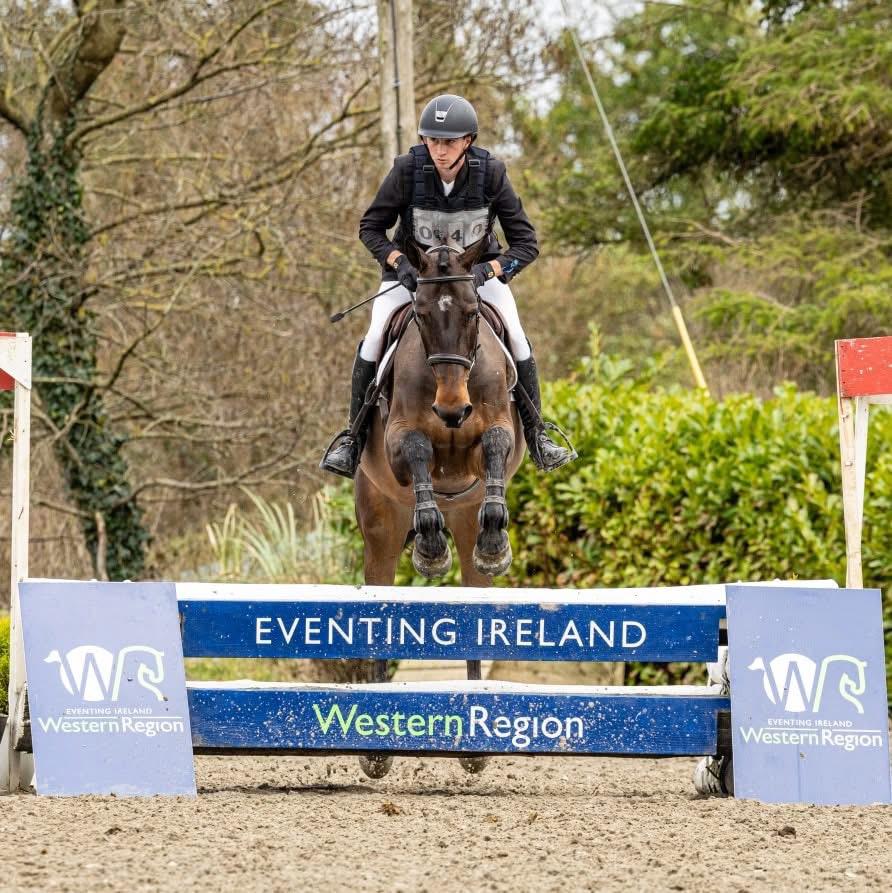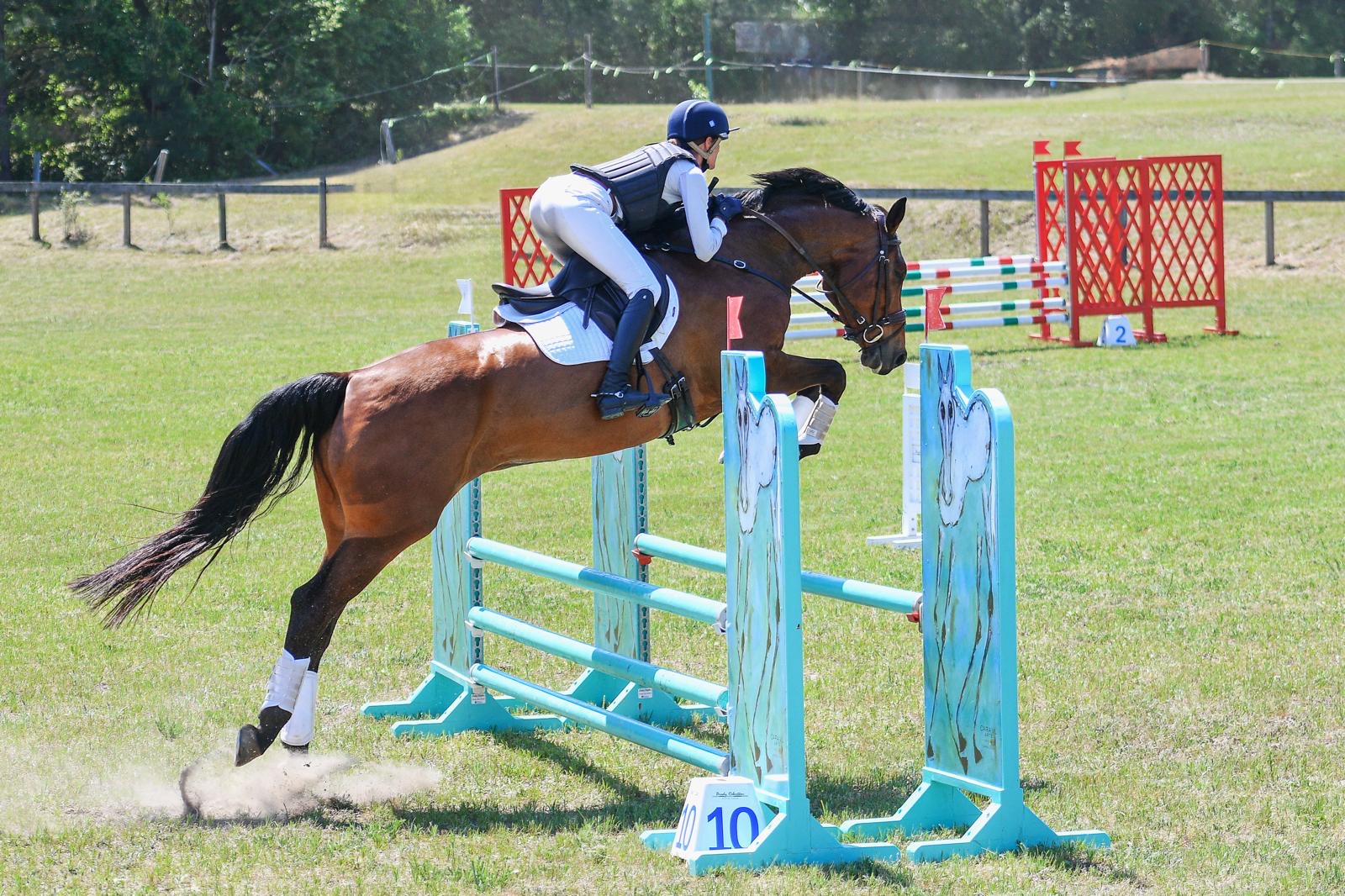We are pleased to welcome our newest guest columnist, Allison Kavey of Rivendell Dressage. Allison Kavey is an international grand prix dressage rider with a long-standing affection for teaching. Her eventing clients include professionals, such as Colleen Rutledge, and juniors and amateurs ranging from Beginner Novice and up. To read Allison’s detailed breakdowns of Beginner Novice, Novice, Training and Modified tests, click here. In this column, we take a look at one of the key elements of the Preliminary and Intermediate Levels (and beyond): collection.

Allison Kavey during a schooling session. Photo by Annan Hepner/Phelps Media Group.
The Preliminary tests build on the exercises I wrote about last time, especially those found in the Modified B test. The Intermediate tests are also a logical extension of the material found in Preliminary, though this is the first time we see collection as a requirement so I will spend some time talking through that vexed and anxiety-provoking term. This will be a more “theory driven” article than my previous ones because the jump in expectations for Preliminary to Intermediate is one I think is frequently poorly explained. This is where the rubber meets the road for dressage riders — we see this shift from 1st to 2nd level — and most people navigating that transition do not understand it either – so don’t feel alone!
The first place I look when decoding a test is the directives listed next to each movement that indicate what the judges hope to see and which aspects of a question they value. This is an interesting exercise for me; often the exercises I think are especially challenging or interesting are not those the judges value most.
In dressage tests, the judges’ directives can be combined with double coefficients for some movements (though despite my attempts to understand their choices, I do not always get it). These often give riders a hint as to what movements are more valuable to them, so they’re important to pay attention to. Typically, these movements are also key building blocks for levels to come, so paying mind to the individual scores you’re receiving will help you understand what might need to be stronger before moving up.
So what is this collection thing? Collection is the increased organization of the horse’s balance over the hind legs with energy moving over a supple back and into a lifted wither. The horse’s neck will, as a result, elevate its arch. The horse will take shorter, more elevated steps than at the working gaits. From collection, the horse can push forward to medium gaits, which maintain the elevation of collection but add power and swing for a longer stride and frame. At the higher levels, when more collection has been achieved, the horse can perform extensions, in which the longest possible stride is demonstrated along with a lengthened frame.

Tamie Smith and Danito. Photo by MGO Photography.
A few things to note: the poll, not the third braid, should be the highest point, and the nose must stay on or slightly in front of vertical. This reinforces the important principle that collection is created through the organization of energy by the rider’s seat and leg to elevate the horse into the bridle and over — not against — the bit.
Fake collection, which we see far too frequently, is easy to pick out: the horse’s neck is artificially short, he is visibly tense in the back, the mouth and tongue might be busy, and the energy that should be coming from the hind legs and through the back stops under the saddle because it is blocked. Sometimes horses ridden like this maintain tremendous expression in their front legs, depending on their natural gaits, and sometimes they move like broken marionettes in front and behind. But the hind legs are always the giveaway: collected horses move with deliberate power and rhythm behind, and their backs are up and working. You can usually see the line of their engaged abdominal muscles lifting the back, along with engaged gluteal and hamstring muscles to propel them forward. If the only muscles you can see are in the neck, odds are the horse is not collected.
The cool thing about collection is that every horse on the planet can accomplish it. They might not piaffe, but they can certainly collect the basic gaits. So how do you, as the rider/trainer, help your horse — OTTB or dressage machine — learn this skill?
The first thing to do is think about muscle. How strong is your horse? Collection is the equine equivalent of weight lifting, and you will need to specifically address building your horse’s strength through dressage and cross training as you move from working to collected gaits. Here you have an advantage over many dressage riders who dislike defying gravity! If you are doing grid work in a good frame where your horse jumps over the back, you are building the right muscle.
The same goes for trot and canter sets, especially those done on hills. As long as your horse is pushing from behind over the back as you do your endurance work, you are accomplishing two goals at once. I do quite a lot of hill work with my horses, and I am fortunate to have very steep hills on the farm in New York.

Photo by Annan Hepner/Phelps Media Group.
One exercise to try: walk 1/3 of the way up the hill and, keeping your horse straight between your legs and reins, transition to trot. Go the next 1/3 up the hill, then transition to canter. Work your hills on diagonals as well as straight lines, so that you are getting the maximum effort from the weaker hind leg. Your horse will not thank you the first month, but the long term payoff is high. Do the same exercise from trot to bigger trot to smaller trot on the hill, and then repeat at the canter.
In the arena, a series of one stride high-sided cross rails will accomplish similar strength building. Again the caveat is that the horse must push from behind over the back for any of these things to work.
In the dressage arena, many exercises support collection. Any lateral work induces it, so you should play with long lines of leg yield and then start changing the bend to switch to half pass as you go. Shoulder-in, travers, and renvers — especially on circles — are excellent ways to locate and work the hind legs. Be careful with travers: horses tend to love it because they can shift their butts one way or the other while leaning on the opposite shoulder. This is not travers but instead “butt in”. Make sure not to accept too much angle if it cannot be supported by an equally elevated outside shoulder.
The same principle should be applied to shoulder-in. If your horse adores chucking the shoulders in while leaving the outside hind leg hanging in the breeze or, when performing this movement off the rail, outside of the original line, you are no longer doing shoulder-in. Use your outside leg to control the outside hind leg and keep it pushing up and under. You should always be able to go straight with minimal effort from any of these movements, and you must always be equally able to transition up or down. That means your horse is ahead of the leg and responsive to your half halts, which equals “on the aids” and not against the bridle.
When working on collection, remember that you also need to develop your medium and extended gaits. You can do this by experimenting over short distances — try not to just go booming across the diagonal, which tends to result in the dreaded “hocks out behind” and puts horses on the forehand. Instead, do a few steps medium, a few steps collected, a few steps extended, etc. to see what you can accomplish, when your horse loses balance, and how effectively you can rebalance.
The goal is eventually to be able to rebalance within the extension using tiny half halts to keep the hind legs pushing under the belly rather than allowing the hocks to trail. The more transitions among trots and canters you do at home, the more likely you will be successful at the competitions. There are never too many transitions.
Dressage is not a beauty contest, though it may sometimes seem that way. Every horse can do it and benefit from the work. That does not, of course, mean that every horse will score the same. This is the unfair and difficult part of this discipline. More talented horses with better basic gaits will, when properly trained, earn higher marks than less talented, equally well-produced horses. But even if your horse’s basic gaits are not Valegro’s, you can improve them by making them more elastic and supported by stronger hind legs. And then you can go JUMP higher and run faster, which makes it all worth while.

Allison Kavey. Photo by Annan Hepner/Phelps Media Group.
International Grand Prix competitor Allison Kavey founded Rivendell Dressage, Inc. in 2007 with Andrea Woodner. Allison has extensive experience teaching dressage riders from Training Level up to Grand Prix, working on position and basics to improve riders’ harmony with their horses. She also works with eventers through the CCI***** level and hunter/jumper riders looking to improve their position and flatwork. In addition to training and coaching her students, Allison develops and sells young dressage horses of exceptional quality. RDI horses have achieved many national championships and multiple top 20 placings in the USDF national standings since 2007.




















